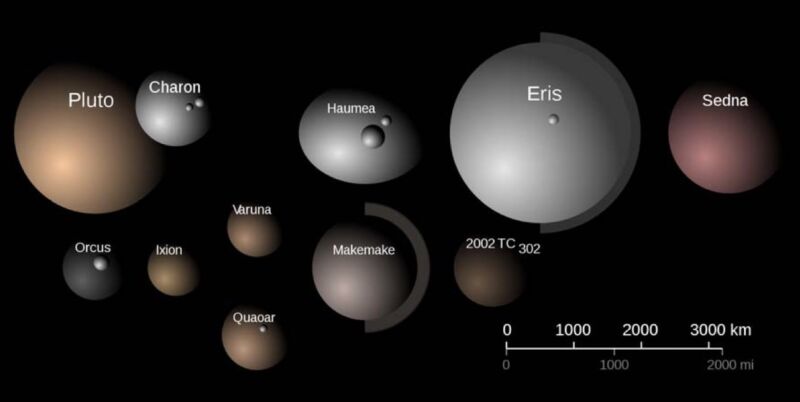Dwarf planet hosts a ring that’s unexpectedly far from the planet

Enlarge / Prior to this, Quaoar (lower left) looked like a very average Kuiper belt object. (credit: NASA)
Many bodies in the Solar System have rings-gas giants, dwarf planets, even an asteroid. These examples have allowed us to get a good picture of their physics, leading to models for how rings form and what keeps the material there from falling into the planet or condensing into a moon.
But a discovery described in a paper released today suggests we've gotten something (or maybe more than one something) seriously wrong. A dwarf planet called 50000 Quaoar that orbits beyond Neptune appears to have a ring that shouldn't be there, at 7.4 times more distant than the planet's radius. There are a couple of ideas about why the ring might survive in this location, but nothing definitive at this point.
Ring signalsQuaoar resides in the Kuiper belt, an area beyond the orbit of Neptune. With a low density of icy material and no giant planets around to sweep it up, the Kuiper belt is home to a sparse population of dwarf planets like Pluto. Despite its low density, the Kuiper belt is large enough that there are a lot of bodies out there, and we've only recently developed the telescope hardware necessary to catalog them.